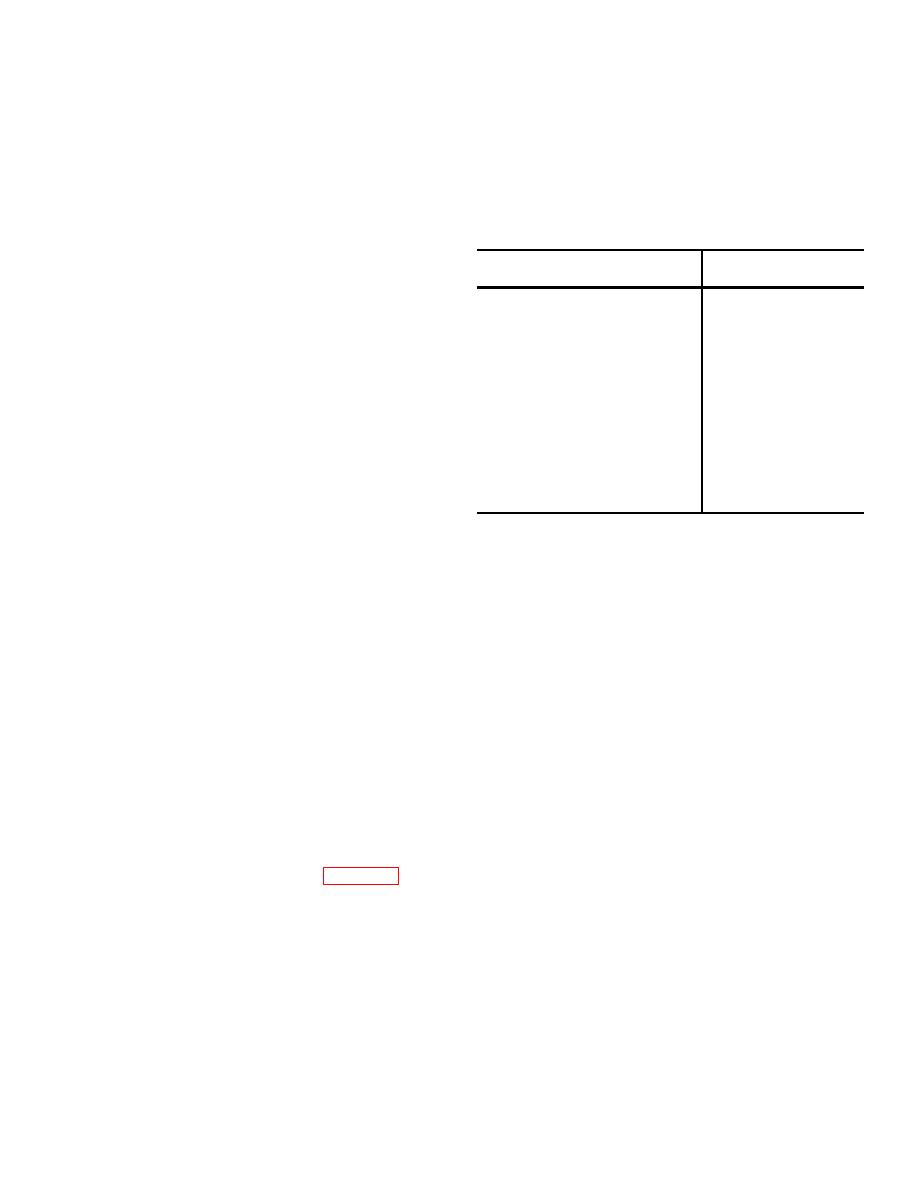
TM 32-5985-342-14&P
CHAPTER 2
SERVICE UPON RECEIPT AND INSTALLATION
Section I. SITE AND SHELTER REQUIREMENTS
recommended distances that should be maintained
2-1. SITING. The site selected for the Antenna Tower
between the set and various obstructions.
TS-9A, whenever tactically possible, should meet the
requirements listed below.
Table 2-1. Distances from Obstructions
a. Terrain should be essentially flat for at least 150
Distance to be
yards in all directions from center, with not more than
Obstruction
maintained
gentle sloping for several times that distance.
Scattered trees and single,
200 yards
b. Site should be on the highest level area
small buildings
available in the general vicinity.
Wire fences
300 yards
High cliffs and deep ravines
More than 1 mile
c. Mountainous or hilly terrain should be avoided.
Buried metallic conductors
300 yards
d. Tower should not be erected in dry streambeds.
(cables and pipelines)
(Sudden rainstorms may cause flash flooding.)
Chimney stacks and water towers 500 yards
e. Site should be far enough inland so that coastal
Overhead conductors and
500 yards
refraction errors from shorelines of large bodies of water
railroad tracks (power lines,
are avoided. (If installation must be made on or near
telephone lines, and antennas)
the coast, the most level area should be selected.
Rivers, streams, and lakes
600 yards
Accuracy is greatest when signals from the target area
Forests and metal structures
500 to 1,000 yards
cross the coastline at right angles).
Mountains
5 to 25 miles
f. The earth surrounding the installation should
2-2.
SITE PREINSTALLATION PREPARATION.
have uniformly high conductivity and a uniform moisture
Minor site preparation may be necessary prior to tower
content. Areas evenly covered with grass or vegetation
installation. The site area should be level so operators
usually meet this requirement. (Rocky or sandy soil has
can use equipment with maximum efficiency. Ensure
low conductivity and should be avoided where possible;
that adequate drainage is provided.
however, an area with uniformly low conductivity is
2-3.
SITE SOIL CONSIDERATIONS.
The area
preferable to an area of high conductivity that is spotted
selected for tower installation should be able to
with rocks or sand, or has varying moisture content.)
withstand a minimum load bearing capacity of 3,000
g. Regions showing scattered bare spaces of earth
pounds per square foot. If the area cannot provide this
should be avoided. Such spaces usually indicate the
minimum, the size of all concrete piers must be
presence of rocks, mineral outcroppings, or underground
increased to further distribute the loads. Consult civil
streams.
engineers for guidance on load distribution if necessary.
h. Site should have an adequate and readily
2-4. SHELTER REQUIREMENTS. There are no
available power source to meet the operational
shelter requirements for the Antenna Tower TS-9A.
requirements of the Antenna Tower TS-9A.
i. An easily accessible road with a solid base
should be available for transportation of personnel and
heavy equipment. Consideration may be given to space
in an adjacent area for helicopter landings.
j. Site should be far enough from obstructions to
assure greater accuracy of bearings. Table 2-1 lists
Section II. SERVICE UPON RECEIPT OF MATERIEL
will be required for unloading and handling the crates.
2-5. UNPACKING. The Antenna Tower TS-9A is
Materials should be unloaded and stored carefully and
shipped to the installation site completely disassembled
systematically to prevent damage to and loss of small
and crated. A crane, fork lift, or a winch truck with an A-
pieces, and to allow rapid identification of related parts.
frame which can lift a minimum vertical load of 2 tons
2-1


 Previous Page
Previous Page
